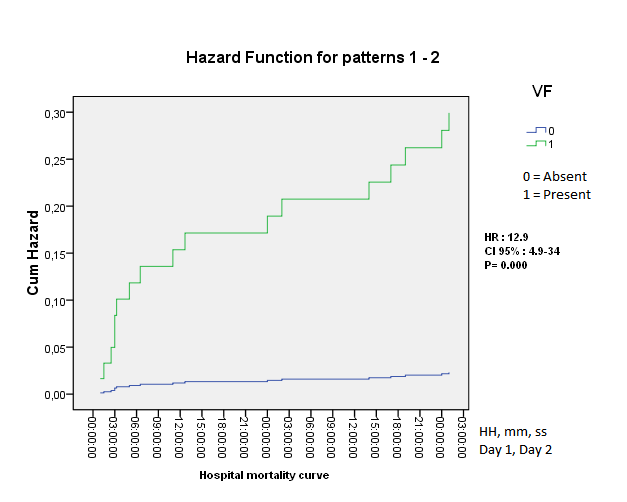Ventricular Fibrillation in Acute Coronary Syndrome with Elevated ST Segment: Incidence and Predictive Factors.
Clinical Medicine And Health Research Journal,
Vol. 3 No. 3 (2023),
3 May 2023
,
Page 381-388
https://doi.org/10.18535/cmhrj.v3i3.168
Abstract
Background: Ventricular fibrillation is the principal cause of sudden cardiac death; in acute coronary syndrome (ACS) with elevated ST segment, its incidence and predictive factors, have been the subject of several international studies; however, its epidemiological data is lacking in Algeria.
Aims: The main objective of our study is the determination of the frequency of ventricular fibrillation in acute coronary syndrome with elevated ST segment, the secondary objective was the analysis of predictive factors of this arrhythmia, and related mortality.
Methods and materials: In this prospective study, conducted in the cardiology department of Hussein Dey hospital (Algiers-Algeria), 467 patients with acute coronary syndrome with elevated ST segment (87 women and 380 men) were enrolled between 28 February 2014 and 16 July 2015. The average age is 60 ± 13 years; at admission, a Holter recorder was attached for continuous ECG monitoring during 48 hours
Kruskal’s ANNOVA or H tests were used for comparison of quantitative variables, χ2 test or Fisher’s exact test, were used for qualitative variables, all tests were performed with 1st species risk of 5%.
Results: The frequency of ventricular fibrillation is 5.8% (27 patients), CI 95%: [3.7%-7.9%], multivariate analysis identified the following independent predictors: low diastolic blood pressure: high ST segment elevation, large diastolic left and right ventricular diameters.
The risk of mortality expressed by Hazard Ration (HR) is 12.9 (CI 95%: [4.9-34], p < 0.001), the predictors of mortality are right ventricular failure and failure of thrombolysis.
Conclusion: Ventricular fibrillation is the principal cause of sudden cardiac death, during acute coronary syndrome with elevated ST segment, its predictive factors according to our study are: low diastolic blood pressure: high ST segment elevation, large diastolic left and right ventricular diameters, its occurrence increases the risk of hospital mortality, this high risk is partly explained by the therapeutic strategy.

How to Cite
Download Citation
References
- Article Viewed: 0 Total Download


